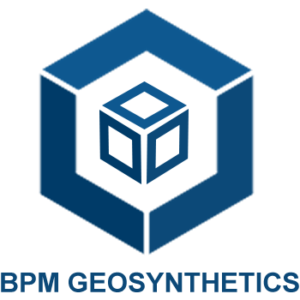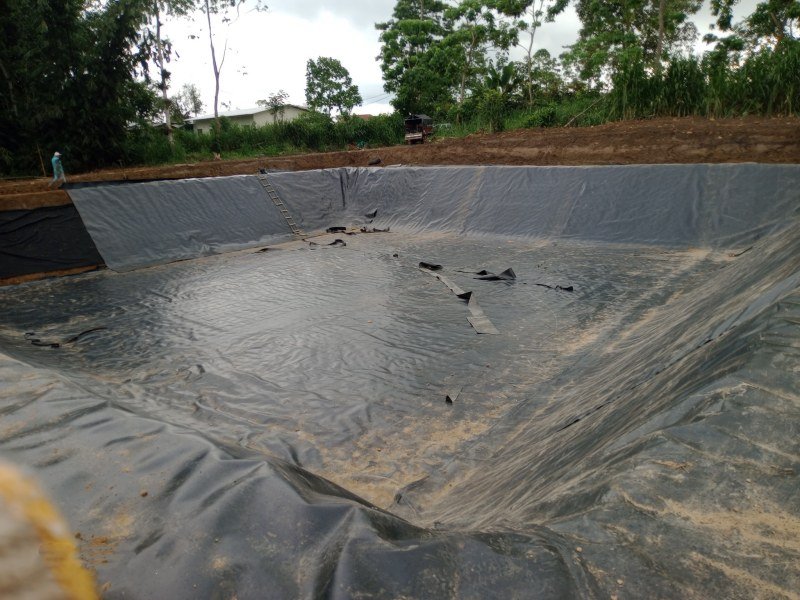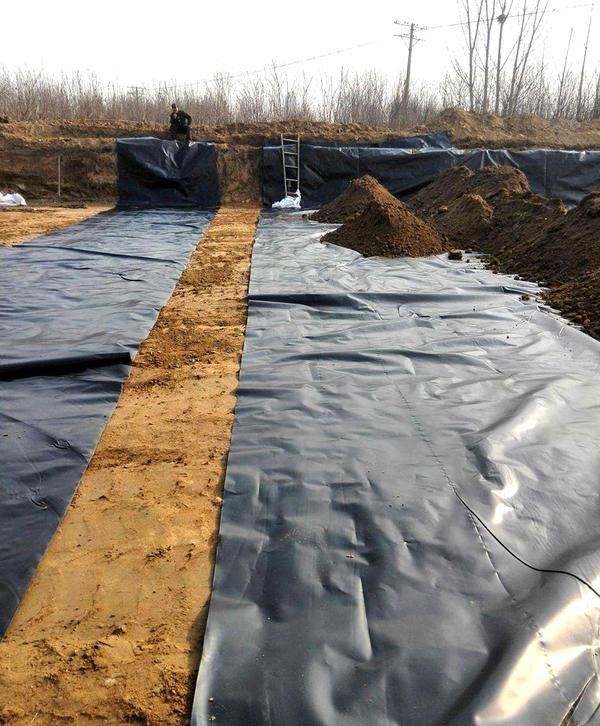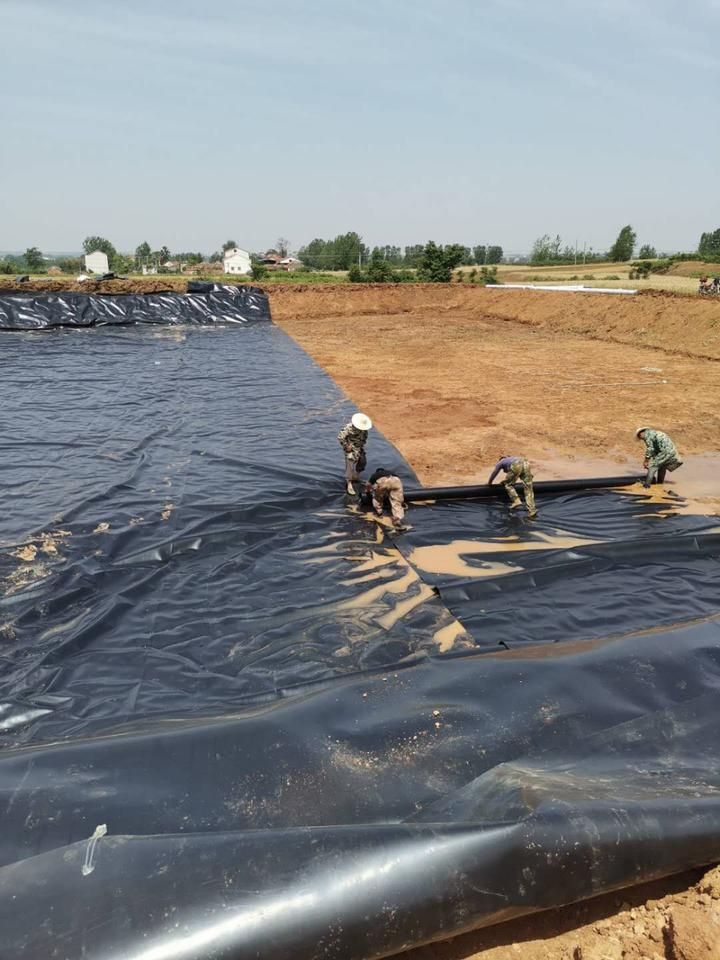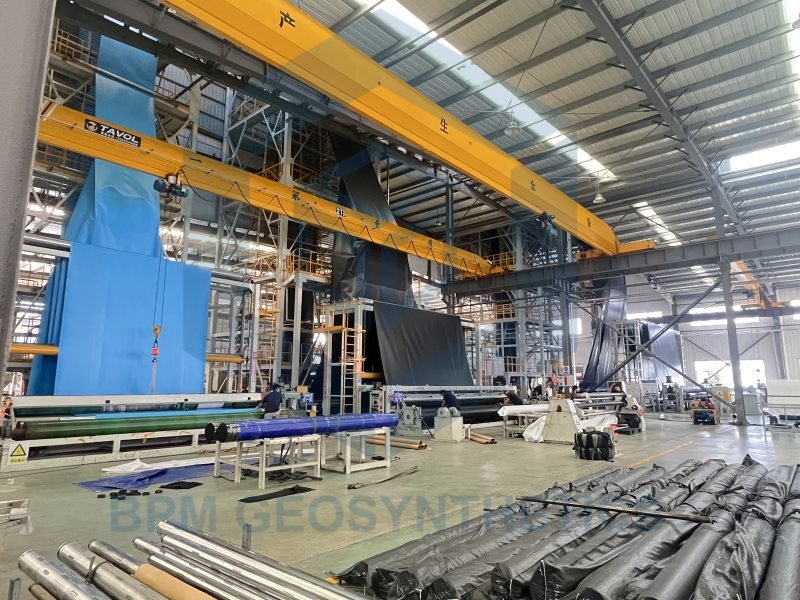Impermeable geomembrane is the first line of defense in modern waste containment systems. They combine cutting-edge materials science with precision engineering. This guide reveals the 7 critical features that make impermeable geomembrane indispensable. Impermeable geomembrane have ultra-low permeability (<10⁻¹² cm/s). They also have extreme chemical resistance. Impermeable geomembrane UV stability lasts over 20 years. And their seam strength exceeds the parent material. Whether for landfill liners or hazardous waste ponds, these engineered barriers deliver zero-leakage performance. Meanwhile, they slash lifecycle costs by 40 – 60% versus traditional solutions.
Impermeable geomembrane is flexible waterproofing materials. They are made from high-molecular-weight polymers such as HDPE and LLDPE. Impermeable geomembrane thickness ranges from 0.5 to 3.0 mm. BPM Geosynthetics Company specializes in manufacturing these high-performance geomembranes. They offer four core advantages. First, Impermeable geomembrane has exceptional waterproofing performance (permeability coefficient < 10⁻¹² cm/s). Second, they are superior in durability (corrosion-resistant and age-resistant). Third, they have high elongation (>700%). Fourth, they are lightweight for easy installation.
The impermeable geomembrane produced by BPM Geosynthetics have gained popularity due to three key characteristics. They are cost-effective (cost is only one-third that of concrete). Impermeable geomembrane is reliable (seamless welding ensures excellent waterproofing performance). They are also adaptable (suitable for complex terrains such as landfills and artificial lakes). Additionally, BPM’s impermeable geomembrane products meet international environmental certifications. They balance engineering performance with sustainable development requirements. Thus, they become the preferred choice for modern waterproofing projects.
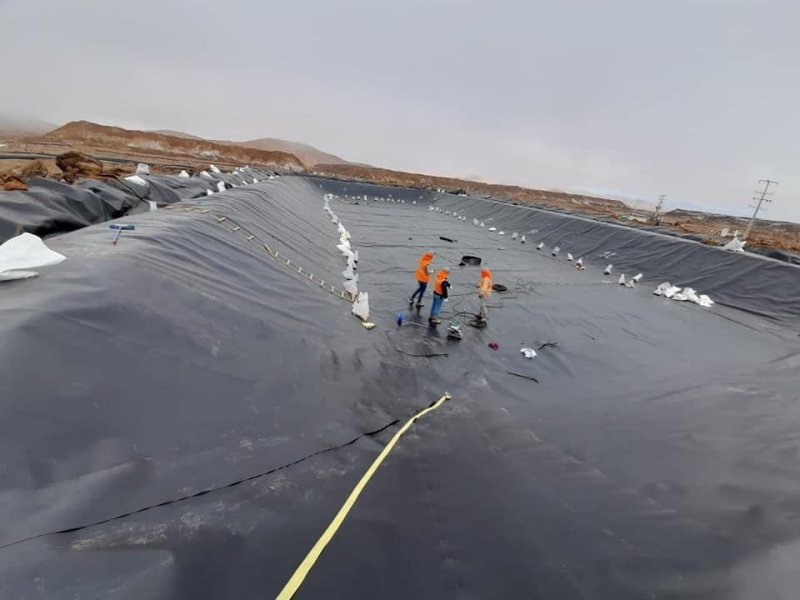
1. Impermeable Geomembrane Material Properties
1.1 Low Permeability
The core characteristic of impermeable geomembrane is their extremely low permeability. This property effectively prevents the migration of liquids and gases. It stops contaminants from infiltrating surrounding soil or water bodies. In projects like hazardous waste landfills and wastewater treatment, this property is critical. It ensures harmful substances do not contaminate the surrounding environment.
1.2 Chemical durability
Especially impermeable geomembrane made from HDPE exhibit excellent chemical durability. They can resist corrosion from various chemicals. Even in harsh environments like industrial waste storage and mining, they maintain stable performance. Thus, they ensure long-term reliable geomembrane performance.
1.3 UV resistance and weatherability
In outdoor projects, impermeable geomembrane usually feature UV-resistant coatings. These coatings enable them to withstand prolonged exposure to direct sunlight. They also handle temperature fluctuations well. As a result, they ensure stable performance under various climatic conditions. This extends their service life.
2. Breakthrough Value of Impermeable Geomembrane in Environmental Performance
The impermeable geomembrane completely blocks the migration of pollutants. It does so through its molecular-level dense structure (permeability coefficient < 10⁻¹² cm/s). Take a landfill site as an example. Using 1.5 mm impermeable geomembrane can reduce leachate leakage to <0.001 L/m²/year. This is far below the limits specified in the EU Landfill Directive. This proactive protective mechanism reduces environmental pollution risks by over 90% throughout the project’s lifecycle. It fully aligns with the requirements of the ISO 14001 Environmental Management System.
3. Ecological barrier function of geomembranes in resource protection
The impermeable geomembrane forms a physical barrier layer in hazardous waste disposal sites. It prevents heavy metals (like lead and cadmium) and organic pollutants (like benzene compounds) from spreading. This safeguards the groundwater safety zone within a 500-meter radius. Field data shows that soil heavy metal concentrations around chemical industrial parks using impermeable geomembrane are only 1/200 of those in unprotected areas.
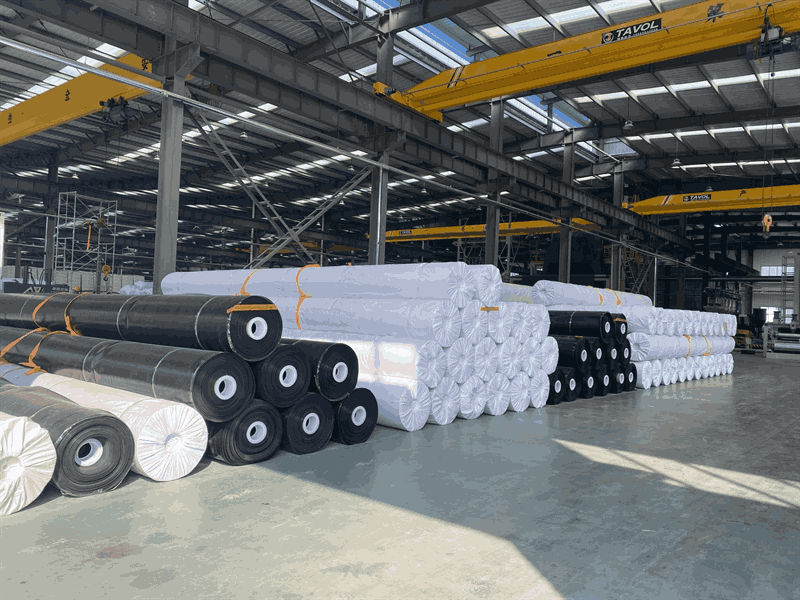
4. Impermeable geomembrane demonstrate outstanding ease of installation and long-term maintenance advantages in engineering applications
4.1 Geomembrane Installation Convenience
Impermeable geomembrane can typically be manufactured in large sheets. Standard widths are up to 8 meters and roll lengths are 200 meters. When used with fully automatic welding equipment (welding speed 3–5 m/min), they enable rapid installation. Its unique hot-melt double-seam welding technology ensures seam strength. The tested air pressure is ≥200 kPa. The seam strength exceeds 90% of the base material. Compared to traditional adhesive bonding processes, it achieves a 300% increase in efficiency. This significantly reduces installation time and labor requirements. Thus, it enhances construction efficiency.
4.2 Impermeable Geomembrane long service life
When properly installed and maintained, the impermeable geomembrane’s service life can exceed 20 years. Adding 2.5% carbon black and antioxidants helps. In the ASTM G154 UV aging test, it performs exceptionally well. After 5,000 hours of exposure, its tensile strength retention rate is over 85%. Its resistance to UV radiation, temperature fluctuations, and physical wear ensures functionality. Thus, it reduces the risk of leaks caused by material degradation.
5. Summary of the Cost-Effectiveness Advantages of Impermeable Geomembrane
5.1 Outstanding Long-Term Economic Performance
Impermeable geomembrane is manufactured using high-quality polymer materials. Their service life far exceeds the 10 – 15 year lifespan of traditional waterproofing materials. Additionally, their annual maintenance costs can be kept below 2 yuan per square meter. This results in over 60% savings compared to concrete structures. Most importantly, advanced welding techniques and material formulations reduce leakage risks by over 90%. This effectively avoids environmental remediation costs caused by leaks.
5.2 Full-Life-Cycle Cost Advantage
Impermeable geomembrane offer significant advantages over traditional clay liners. This cost advantage mainly comes from three aspects. First, there are economies of scale from standardized material production. Second, mechanized construction improves efficiency. Third, post-construction maintenance requirements are extremely low. Additionally, impermeable geomembrane require only 85% of the land area needed by traditional waterproofing solutions. This saves 15 – 20% of land resources. It is a critical advantage in regions with limited land availability.
5.3 Significant Added Value
The added value of impermeable geomembrane lies in their 95%+ recyclability. This aligns with circular economy requirements. More importantly, projects using impermeable geomembrane is more likely to secure green credit support. This includes interest rate discounts of 10 – 15% and tax incentives. These added values boost the comprehensive return on investment by 20 – 30%. This further solidifies impermeable geomembranes’ preferred status in environmental engineering projects.

6. Impermeable Geomembrane Application Scenarios
Landfills
In landfills, impermeable geomembrane serve as a liner system. They effectively prevent leachate from infiltrating into soil and groundwater. This reduces the risk of environmental pollution. It is one of the key measures for landfill liner systems.
Wastewater Treatment Facilities
Impermeable geomembrane is widely used as liners in wastewater storage tanks, settling tanks, and lagoons. They prevent wastewater leakage and protect groundwater. In wastewater treatment projects, using impermeable geomembrane ensures the safe storage and treatment of wastewater.
Mine tailings ponds
In mine tailings ponds and heap leaching pads, impermeable geomembrane is used. They ensure the safe storage of toxic substances. They prevent harmful substances from leaking into the environment. This is of great significance for environmental protection in the mining industry.
7. Impermeable Geomembrane offer excellent adaptability
Terrain adaptability
Impermeable geomembrane possess excellent flexibility and extensibility. This enables them to adapt to various complex terrains and substrate conditions. Whether on flat ground or surfaces with slopes, unevenness, or irregularities, impermeable geomembrane can closely conform to the surface. Thus, they ensure waterproofing effectiveness across the entire area.
Environmental adaptability
Impermeable geomembrane can adapt to different environmental conditions. These include temperature changes, humidity changes, and chemical environments. Their weather resistance and chemical stability enable them to maintain performance. Thus, they can handle various harsh conditions.

Conclusion
Impermeable Geomembrane stands out in wastewater treatment projects. They have low permeability, chemical durability, UV resistance, and weather resistance. Impermeable geomembrane is easy to install, has a long service life, and low maintenance costs. Impermeable geomembrane can adapt to complex terrains and environments, and they offer high construction efficiency, are environmentally friendly and recyclable. They provide both waterproofing and protective functions, are compatible with other materials. Impermeable Geomembrane has significant economic advantages, comply with environmental regulations, ensures high safety. They are easy to monitor and maintain, and have excellent customization and repair capabilities. These comprehensive advantages make them an ideal waterproofing material for wastewater treatment projects. They not only ensure waterproofing effectiveness but also enhance the project’s economic viability and sustainability.
